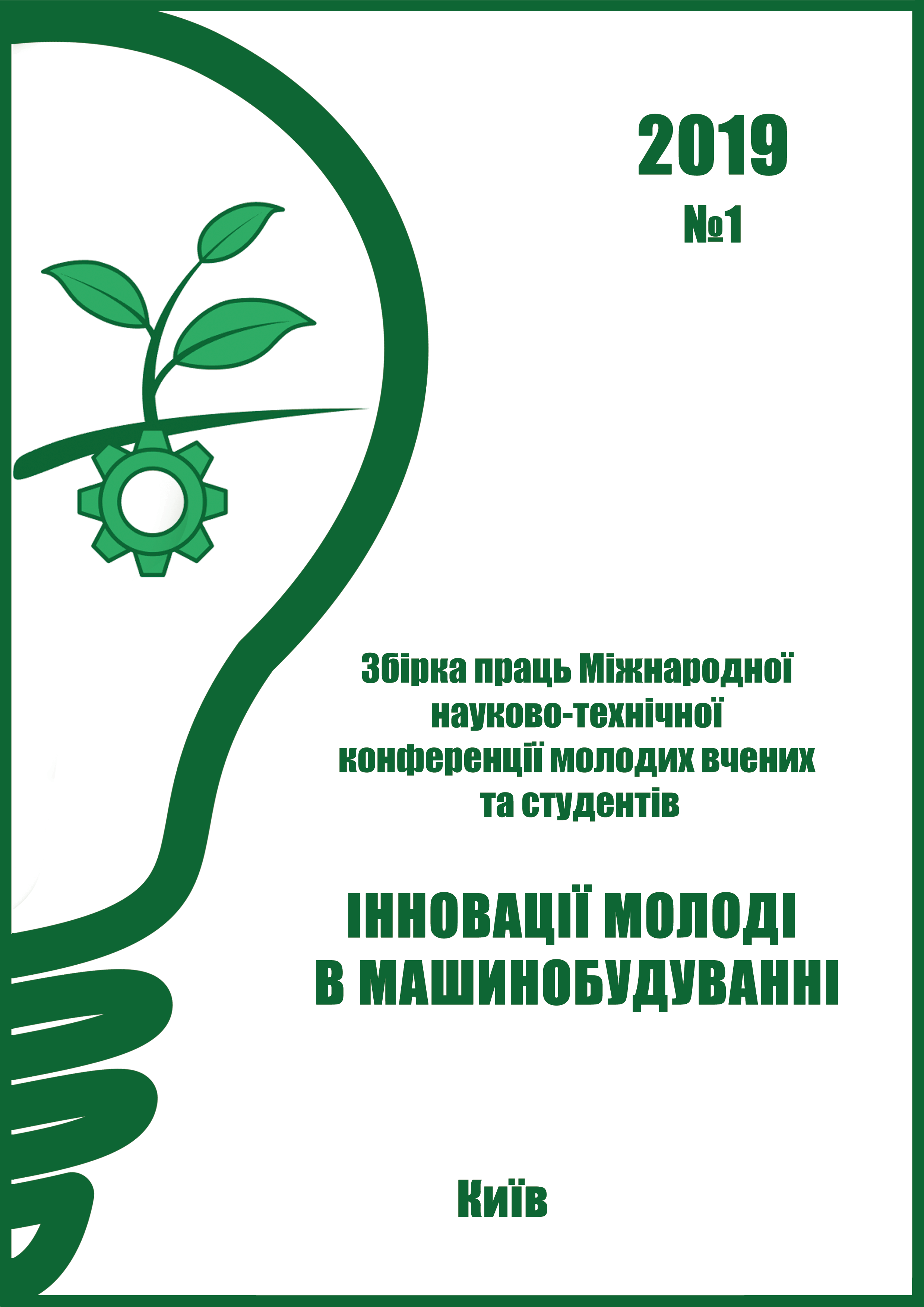Study of surface roughness by acoustic signal obtained from piezoelectric electret sensors in milling machine with CNC
Основний зміст сторінки статті
Анотація
Nowadays, quality requirements in industry is an important issue. Study of surfaces machined with milling machine tools with computer numerical control by acoustic signal is informative method of monitoring of machining in industry. Also, studying of machining parameters and surface quality can be applied in different methods of machining metals, for example in abrasive waterjet cutting [1]. Quality of surfaces is important for machines and details.
In this research acoustic signal was measured by two piezoelectric sensors with thin electret plate to find out how surface roughness correlate with it. Electret material have dielectric properties and have high resistance to cutting fluids and coolants. It is important, because cutting of metals in experiment have been done in condition of machining with coolants. Electret microphone circuit shown on fig. 1. Acoustic signal obtained from electret microphone is characterized by frequency (Hz) and decibels relative to full scale (dBFS). Studying of this parameters compared with g-code and operation on machine tool allows to correlate acoustic signal with characteristics of finished surfaces.
The experiment was done on HAAS VF-2 machining center with support of ISO 6983 G-code. Two main operations were milling of planar and cylindrical surfaces and drilling of holes. Total of 5 parts with same drawings were machined. Each part was machined with one fixture outfit. Finished detail is shown in fig. 2. Material of workpiece was Duralumin D16 GOST 4784-97. Dimensions of the workpiece was L´H´B = 130´80´25mm. Cutting tools used in research was mill Ø10 with length of cutting part 20mm and spiral drill Ø12 with length of cutting part 70mm. Table 1 demonstrate the cutting parameters of the experiment.
Conclusion. As result of research study of correlation between acoustic signal and surface roughness was done. Acoustic spectrogram with fast furrier transform of machining was obtained and analyzed.
Блок інформації про статтю
Автори зберігають авторське право на цю роботу. Публікація виконана за умовами ліценхії CC Attribution-NonCommercial 4.0.
Посилання
Online-monitoring for abrasive waterjet cutting of CFRP via acoustic emission: Evaluation of machining parameters and work piece quality due to burst analysis / F.Lissek, M. Kaufeld, J. Tegas, S. Hloch. // Procedia Engineering. – 2016. – №149. – С. 67 – 76.
Milling stability analysis with simultaneously considering the structural mode coupling effect and regenerative effect / [X. J. Zhang, C. H. Xiong, Y. Ding та ін.]. // International Journal of Machine Tools and Manufacture. – 2012. – №53. – С. 127 – 140.
A multi-sensor based online tool condition monitoring system for milling process / [X. Zhang, X. Lu, S. Wang та ін.]. // Procedia CIRP. – 2018. – №72. – С. 1136–1141.
Indirect model based estimation of cutting force and tool tip vibrational behavior in milling machines by sensor fusion / [M. Salehi, P. Albertelli, M. Goletti та ін.]. // In Procedia CIRP. – 2015. – №33. – С. 239–244.
Tool path strategy and cutting process monitoring in intelligent machining / M. Chen, C. Wang, Q. An, W. Ming. // Frontiers of Mechanical Engineering. – 2018. – №13. – С. 232–242.
Modal characterization of composite flat plate models using piezoelectric transducers / [É. L. Oliveira, N. M. Maia, A. G. Marto та ін.]. // Mechanical Systems and Signal Processing. – 2016. – №79. – С. 16–29.
Biermann D. A. general approach to simulating workpiece vibrations during five-axis milling of turbine blades / D. Biermann, P. Kersting, T. Surmann. // CIRP Annals, Manufacturing Technology. – 2010. – №59. – С. 125–128.
Research on the multi-sensor fusion-based tool condition recognition system [Електронний ресурс] / N.Xie, B. Zheng, X. Xie, X. Liu // IEEE Proceeding of the 11th World Congress on Intelligent Control and Automation. – 2014. – Режим доступу до ресурсу: https://ieeexplore.ieee.org/abstract/document/7053663
Griffin J. M. The prediction of profile deviations from multi process machining of complex geometrical features using combined evolutionary and neural network algorithms with embedded simulation / James M. Griffin. // Journal of Intelligent Manufacturing. – 2015. – №29. – С. 1171–1189.
Ren Q. Fuzzy identification of cutting acoustic emission with extended subtractive cluster analysis / Q. Ren, M. Balazinski, L. Baron. // Nonlinear Dynamics. – 2012. – №67. – С. 2599–2608.
Estimation of cutting forces and surface roughness for hard turning using neural networks / V.Sharma, S. Dhiman, R. Sehgal, S. Sharma. // Journal of Intelligent Manufacturing. – 2008. – №8. – С. 215–226.
Ravindra H. V. Acoustic emission for tool condition monitoring in metal cutting / H. V. Ravindra, Y. G. Srinivasa, R. Krishnamurthy. // Wear. – 1997. – №212. – С. 78–84.
García-Plaza E. Surface roughness monitoring by singular spectrum analysis of vibration signals / E. García-Plaza, P. J. Núñez-López. // Mechanical Systems and Signal Processing. – 2017. – №84. – С. 516–530.
Advanced monitoring of machining operations / R.Teti, K. Jemielniak, G. O'Donnell, D. Dornfeld. // CIRP Annals - Manufacturing Technology. – 2010. – №59. – С. 717–739.
Online Monitoring of Tool Wear and Surface Roughness by using Acoustic and Force Sensors / [B. Jose, K. Nikita, T. Patil та ін.]. // Materials Today: Proceedings. – 2018. – №5. – С. 8299–8306.

